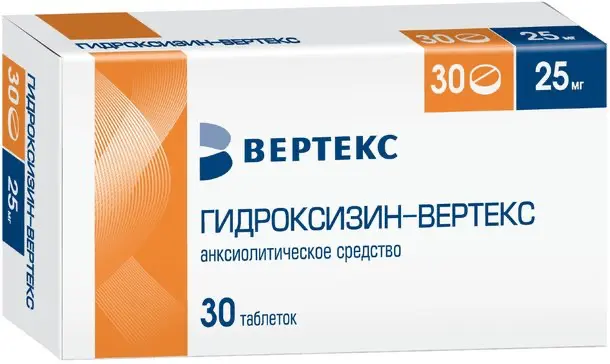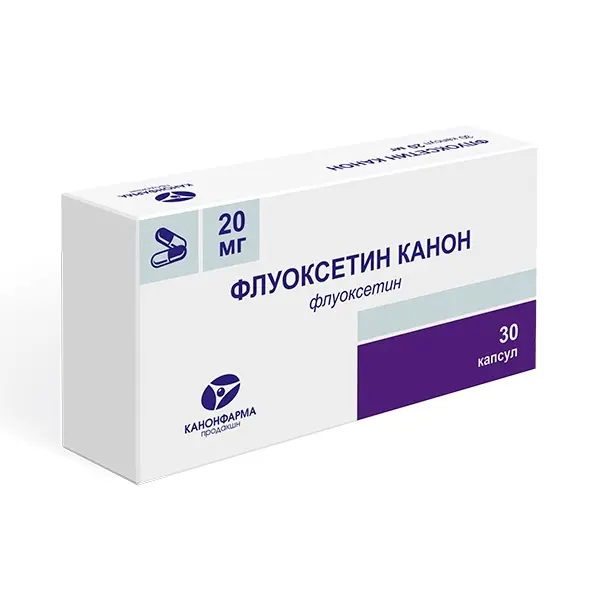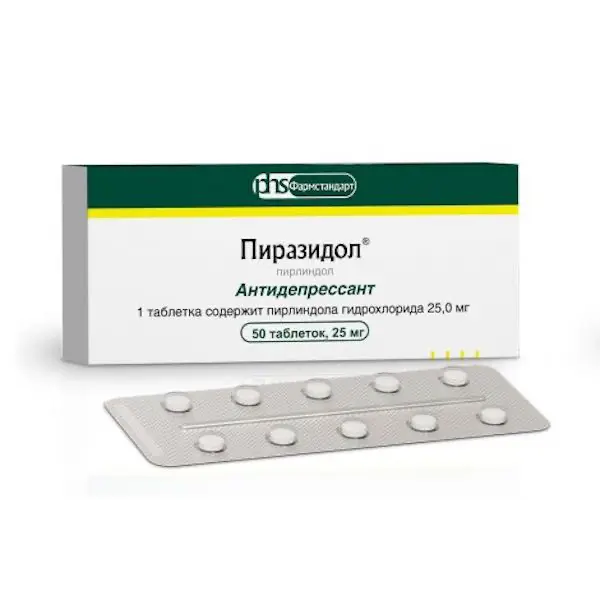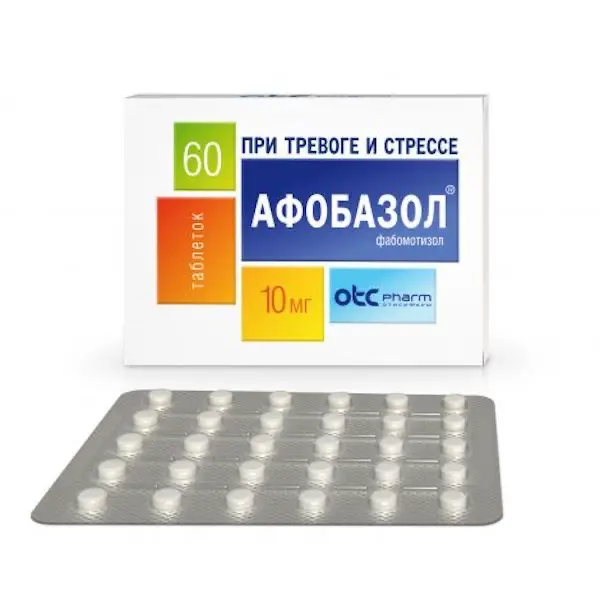Description
Hydroxyzine-Vertex Pharmacodynamics
The active ingredient, hydroxyzine dihydrochloride, is a diphenylmethane derivative not chemically related to phenothiazines, reserpine, meprobamate or benzodiazepines.
Mechanism of Action
Does not inhibit the cerebral cortex, but action may be associated with suppression of the activity of certain key areas of the subcortical area of the central nervous system.
Pharmacodynamic properties
Data on antihistamine and bronchodilator effects were obtained experimentally and confirmed clinically. The antiemetic effect has been demonstrated in both the apomorphine and veriloid tests.
Data from pharmacological and clinical studies indicate that hydroxyzine in therapeutic doses does not increase gastric secretion or acidity, and in most cases exhibits moderate antisecretory activity. After intradermal injection of histamine or antigens in healthy adult volunteers and children, a reduction of rash elements and hyperemia was observed. Also hydroxyzine effectively reduced the severity of itching in various forms of urticaria, eczema and dermatitis.
In patients with liver dysfunction, the antihistamine effect of a single dose of hydroxyzine can be prolonged up to 96 hours after intake.
Electroencephalography (EEG) data in healthy volunteers demonstrate the anxiolytic-sedative profile of hydroxyzine. Anxiolytic effect was confirmed in patients using different classical psychometric tests.
Polysomnography data in patients with anxiety and in patients with insomnia showed an increase in total sleep duration, a decrease in total nighttime wakefulness and a reduction in the latent period of sleep after a daily single dose or repeated doses of 50 mg of hydroxyzine. When hydroxyzine was administered at a dose of 50 mg 3 times daily, a decrease in muscle tension was observed in anxious patients. No memory impairment was noted. No “withdrawal” syndrome was observed after 4 weeks of treatment in patients with anxiety.
Onset of action
In case of use of oral dosage forms, the antihistamine effect starts after about 1 hour. Sedative effect occurs after 30-45 minutes.
Hydroxyzine also has antispasmodic and sympatholytic effects. It exhibits weak affinity for muscarinic receptors. Hydroxyzine demonstrates moderate analgesic activity.
Indications
-symptomatic treatment of anxiety in adults;
-As a sedative during premedication, before surgery;
-Symptomatic treatment of pruritus of allergic origin.
Contraindications .
-Hypersensitivity to any of the components of the drug, to cetirizine, other piperazine derivatives, aminophylline or ethylenediamine in history;
-porphyria;
-Patients with a history of congenital or acquired prolongation of the QT interval;
-Patients with risk factors for QT interval prolongation, including the presence of cardiovascular disease, significant electrolyte imbalance (hypokalemia, hypomagnesemia), cases of sudden cardiac death in the family history, marked bradycardia, concomitant use of drugs that cause QT interval prolongation and/or development of ventricular tachycardia in the type “pirouette”;
-children under 3 years of age;
-Pregnancy, childbirth and breastfeeding;
-Hereditary intolerance to lactose and galactose, lactase deficiency or glucose-galactose malabsorption (because the composition of the tablets includes lactose).
With caution
-myasthenia gravis;
-reduced gastrointestinal motility;
-prostate hyperplasia with clinical manifestations;
– difficulty in urination;
– constipation;
-glaucoma;
-dementia;
-susceptibility to seizures;
-Prone to arrhythmias, including electrolyte imbalances (hypokalemia, hypomagnesemia);
-In patients with cardiac diseases in anamnesis or while using drugs that can cause arrhythmia.
Application during pregnancy and lactation.
Pregnancy
Animal studies have shown toxic effects on reproductive function.
Hydroxyzine penetrates the placental barrier, resulting in higher concentrations in the fetus than in the mother. No relevant epidemiologic data are currently available regarding the effects of hydroxyzine in pregnancy.
Consequently, hydroxyzine is contraindicated during pregnancy.
Childbirth period
Neonates whose mothers received hydroxyzine during pregnancy and/or delivery have experienced the following effects immediately or several hours after birth: hypotension, motor disturbances, including extrapyramidal disorders, convulsive movements, CNS depression, neonatal hypoxic states, or urinary retention.
Breastfeeding period.
Cetirizine, the main metabolite of hydroxyzine, is excreted with human milk. Although formal studies of maternal excretion of hydroxyzine have not been conducted, there is evidence of severe adverse events in newborns or breastfed infants when mothers receive hydroxyzine concomitantly.
Therefore, hydroxyzine is contraindicated during breastfeeding. Breastfeeding should be discontinued if hydroxyzine should be used.
Reproductive function
There are no data on the effect on human reproductive function.
How to use and dosages.
- Orally.
- The drug should be used in the lowest effective dose and for the shortest possible time.
- For symptomatic treatment of anxiety, 50 to 100 mg/day (2 to
4 tablets of 25 mg daily in the evening before bedtime if the anxiety is manifested mainly by insomnia). - For symptomatic treatment of allergic pruritus, 25 to 100 mg/day (1 to
4 tablets of 25 mg per day). - For premedication in surgical practice, 1 to 4 tablets (25 to
100 mg) at night before surgical intervention. - For adults and children with body weight over 40 kg the maximum daily dose is 100 mg.
The physician determines the duration of treatment taking into account the symptoms and prescribes the lowest possible maintenance dose of the drug.
Since reactions to hydroxyzine are extremely variable, it is recommended to start treatment with a low dose of the drug and gradually increase it to the optimal dose, adjusting it according to the patient’s response to therapy. - Use in special patient groups
- Elderly patients
In elderly patients the maximum daily dose is 50 mg. - Patients with impaired renal function
If there is a need to achieve a temporary effect, the dose may be reduced by half. This also applies to patients with renal insufficiency. - Patients with impaired liver function
When treating patients with impaired liver function, it is recommended to reduce the daily dose of hydroxyzine by 33%.
Pediatric patients (use in children over 3 years of age) - For symptomatic treatment of allergic pruritus:
Use in children and adolescents over 12 years of age (with a body weight greater than 40 kg) 25 to
100 mg/day (1 to 4 tablets of 25 mg per day). - Administration in children 9 to 12 years of age (with body weight of 28 to 40 kg) 25 to 75 mg/day (1 to 3 tablets of 25 mg/day).
1 to 3 tablets of 25 mg per day). - Administration in children 7 to 9 years of age (with body weight from 23 to 28 kgs) from 25 to 50 mg/day (from
1 to 2 tablets of 25 mg per day). - Administration in children 4 to 7 years of age (with body weight of 17 to 23 kg) 25 to 37.5 mg/day: 1 to 1.5 tablets of 25 mg/day.
- Administration in children from 3 to 4 years of age (with body weight of 12.5 to 17 kg) from 12.5 to 25 mg/day (1/2 to 1 tablet of 25 mg/day).
- The dose is determined by body weight at the rate of 1 mg/kg/day up to a maximum of
2 mg/kg/day, in divided doses. - For children with body weight up to 40 kg the maximum daily dose is 2 mg/kg/day.
- For children with body weight over 40 kg, the maximum daily dose is 100 mg.





